| Location | Jalisco, México |
| Date | 2008-10 |
| End User | 2 million people who make the annual pilgrimage on the trail from Ameca to Talpa de Allende, Mexico |
| Client | Secretaría de Turismo and Secretaría de Desarrollo Urbano, Gobierno del Estado de Jalisco |
| Design Firms | Ai Wei Wei (Fake Design), China; Christ & Gantenbein, Switzerland; Dellekamp Arquitectos + Periférica, México; ELEMENTAL, Chile; Godoylab, Mexico; HHF architects, Switzerland; Rozana Montiel, Mexico; Luis Aldrete, Estanzuela + Atenguillo, Mexico; Taller TOA, Mexico; Tatiana Bilbao Architects, Mexico |
| Engineer | Fernando Castillo Díaz, Armando Montejano |
| Funders | Gobierno del Estado de Jalisco, Secretaría de Turismo and Secretaría de Desarrollo Urbano |
| Cost per site | 1.3-7.7 million Mexican pesos/$110 844-$656 537 USD |
| Number of site | 9 |
| Total Program Cost | $38.6 million Mexican pesos/$3.12 million USD |
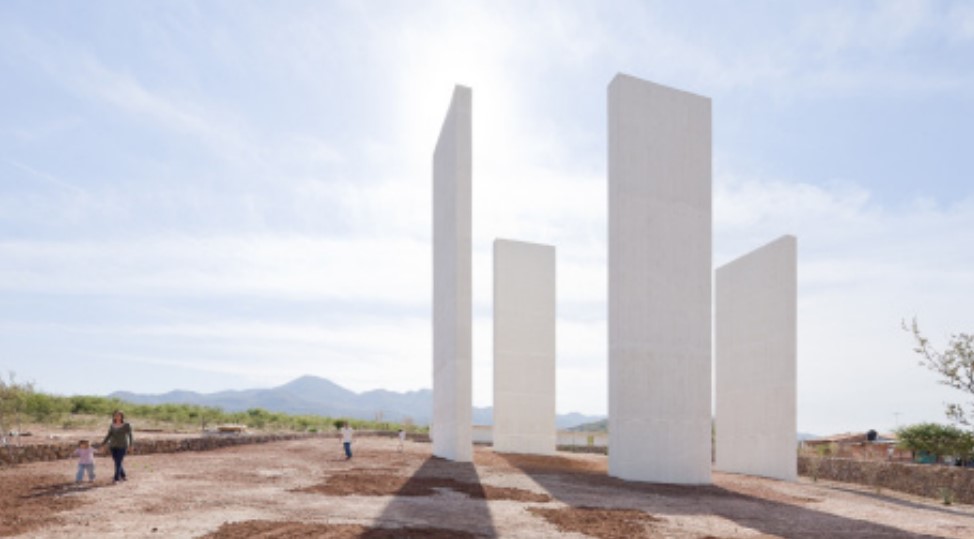
Monumento a La Gratitudby Dellekamp Arquitectos+Periférica creates a cross shape from above and is the first site on the trail. Photo: Iwan Baan
Two million devout Mexicans make the Ruta del Peregrino pilgrimage in southwest state of Jalisco every year during the holy week leading up to Easter. The trek of 117 kilometers (73 mi) begins in the town of Ameca and ends in the town of Talpa de Allende, with a visit to the Rosario Virgin. For years the pilgrims lacked water, food and shelter facilities along the route, but with the continued increase of people making the pilgrimage, the Mexican Ministry of Tourism sponsored a team of international architects to design not only shelter and water installations, but also religious and vista sites along the route. All nine sites are complete, with future plans to replicate the water and shelter sites. These locations make the journey safer and add permanence to the old tradition. The improvement attracts tourists to the area throughout the year, boosting the local economy.
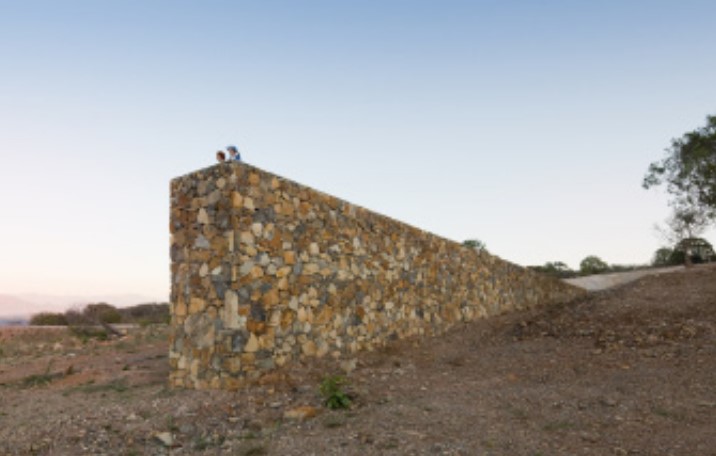
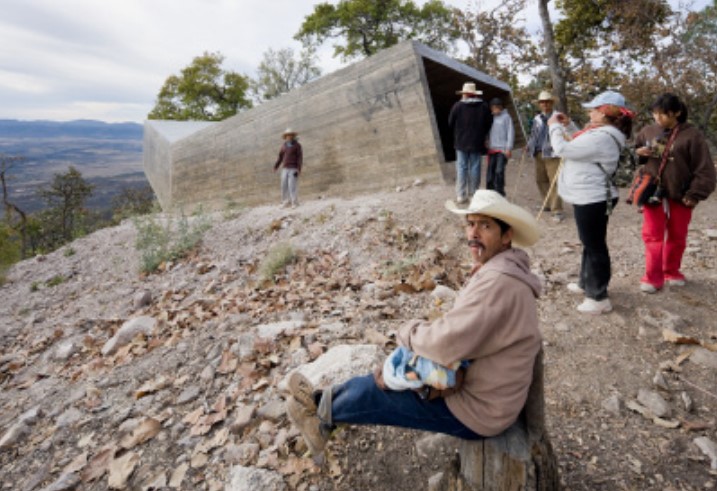
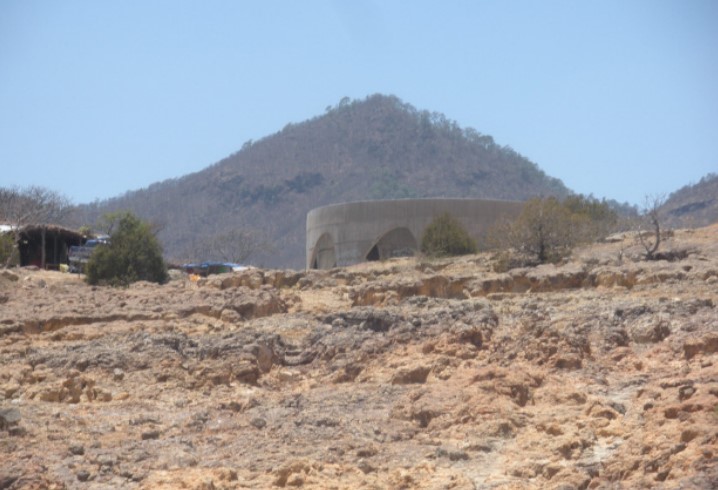
top left image: Ermita En La Falda Del Cerro Del Obispo designed by Ai Wei Wei | Fake Design juts out over the valley. Photo: Iwan Baan
top right image: Although not pictured here, this site, along with a few of the others, has since been marred by graffiti. Photo: Iwan Baan
bottom image: A circular staircase leads to the top of Mirador Los Guayabos by HHF Architects. Photo: Gabriel Guadian/Architecture for Humanity-Guadalajara
Each architectural site was designed to work in harmony with the environment and heighten site-specific experiences of the pilgrimage. The Mirador Espiazo Del Diablo lookout point, designed by the Chile-based firm ELEMENTAL, stands at the tallest point of the trek of 1800 meters (6000 ft) above sea level. The hike to the point is the most challenging part of the trek and this site provides a resting spot. Pilgrims enter this square rock vista point through an angled tunnel, cantilevered over a mountain slope to frame the valley below. “With the new sites, the truth is that it is a very nice experience and your faith grows,” says pilgrim Antonio Bolanios. “Through the pilgrimage you are grateful and realize the Virgin will always be with you.”
Derek Dellekamp, of Dellekamp Arquitectos + Periférica, was moved by the initial interaction people had with Void Temple, a large stone ring that rests in a wooded area. “I say it was very powerful. People were very excited about it as well as very surprised,” he recalls. “It is our hope that every year the sites will be more a part of the story and narrative of the pilgrimage and continue to evolve.”

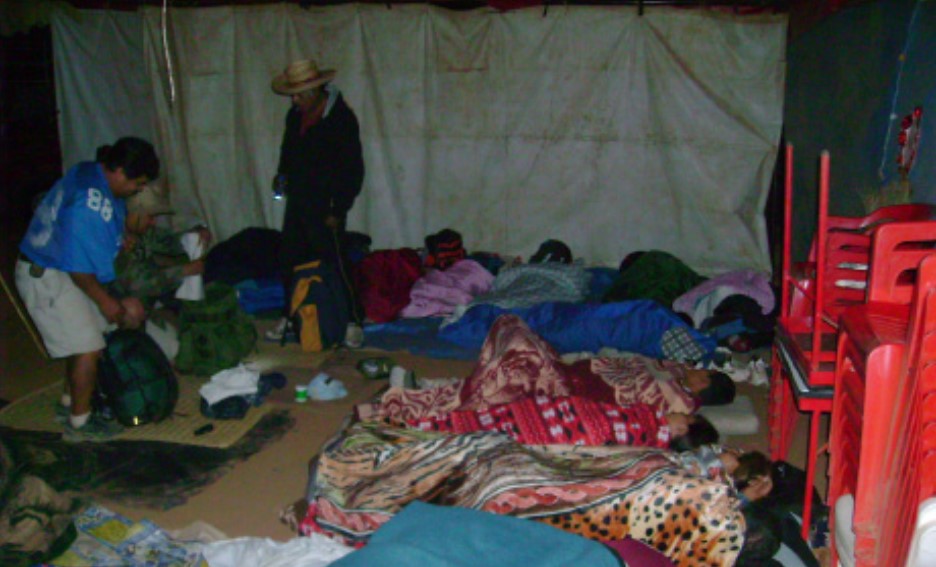
top image: A typical shelter where pilgrims sleep on the journey. Photo: Gabriel Guadian/Architecture for Humanity-Guadalajara
above image: Albergue by Luis Aldret, of Estanzuela + Atenguillo, is a beautiful and functional shelter for pilgrims to sleeping during their trek. Photo: Iwan Baan
Luis Aldrete, of Estanzuela + Atenguillo, designed shelter structures affording adequate shelter to rest and rejuvenate for a few hours or all night. “Both the shelters and the service areas were designed to be copied and repeated,” Dellekamp says. “The sense is that these can be placed in sites in future years and reproduced in order to give better services to the pilgrims.”
The various designs have brought pride as well as income to the small adjoining towns. “After the placing of these pieces, communities committed to protect the area, so that is something that we believe is very powerful,” Dellekamp says, adding that the places have become part of the town’s fabric. Tourists are now visiting the sites all through the year, which benefits the local town. “The narrative of the pilgrim is just gaining strength and these sites are adding to the story of the pilgrimage,” he says.















READ OR LEAVE A COMMENT